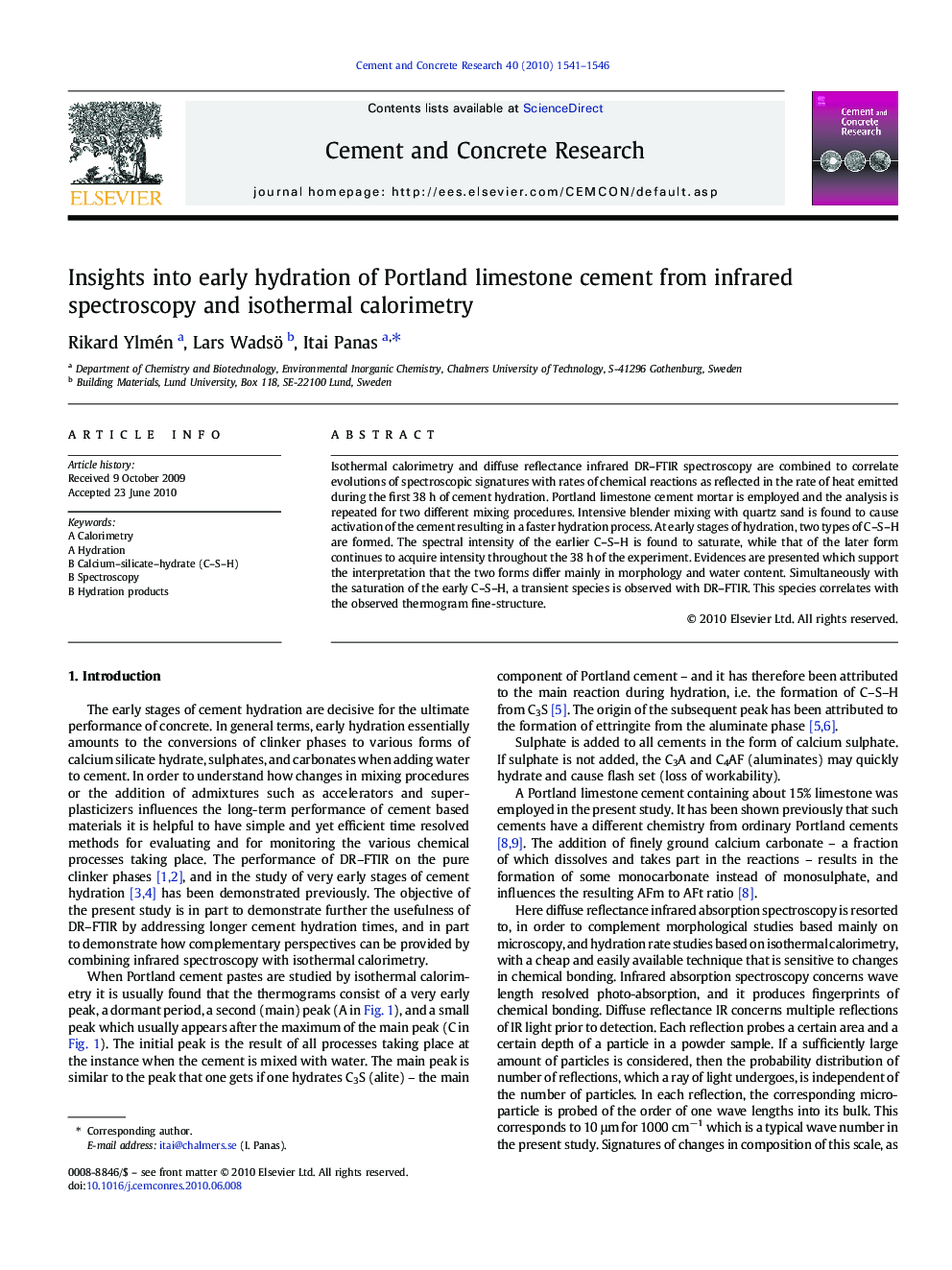| Article ID | Journal | Published Year | Pages | File Type |
|---|---|---|---|---|
| 1457104 | Cement and Concrete Research | 2010 | 6 Pages |
Isothermal calorimetry and diffuse reflectance infrared DR–FTIR spectroscopy are combined to correlate evolutions of spectroscopic signatures with rates of chemical reactions as reflected in the rate of heat emitted during the first 38 h of cement hydration. Portland limestone cement mortar is employed and the analysis is repeated for two different mixing procedures. Intensive blender mixing with quartz sand is found to cause activation of the cement resulting in a faster hydration process. At early stages of hydration, two types of C–S–H are formed. The spectral intensity of the earlier C–S–H is found to saturate, while that of the later form continues to acquire intensity throughout the 38 h of the experiment. Evidences are presented which support the interpretation that the two forms differ mainly in morphology and water content. Simultaneously with the saturation of the early C–S–H, a transient species is observed with DR–FTIR. This species correlates with the observed thermogram fine-structure.
